8+ Feasibility Study report
-

Feasibility Study Report Template
download now -
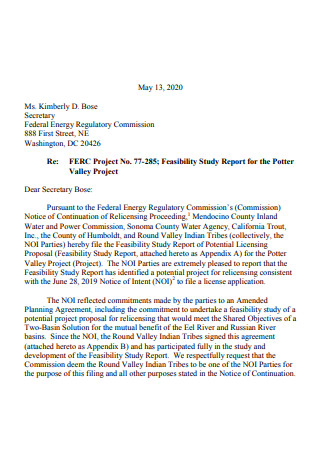
Feasibility Construction Project Study report
download now -
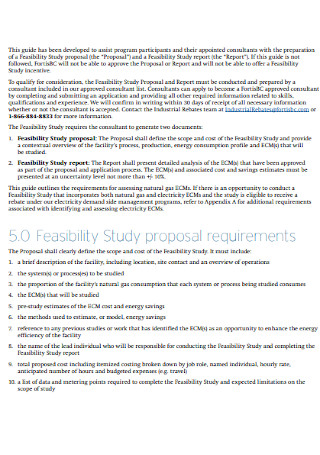
Feasibility Business Study Proposal Report
download now -
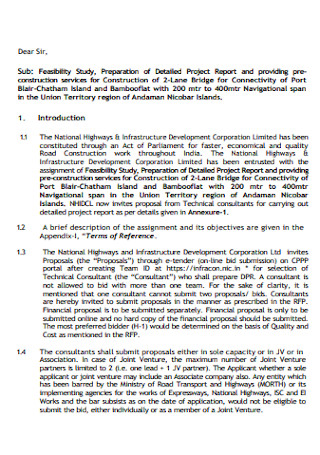
Feasibility Product Study Report Format
download now -
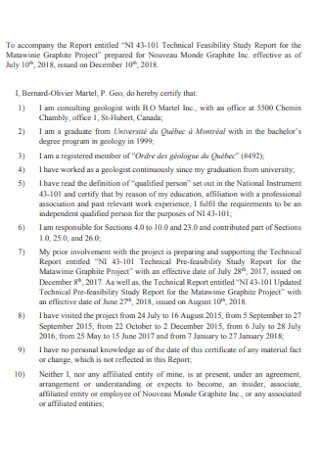
Technical Engineering Feasibility Study Report
download now -
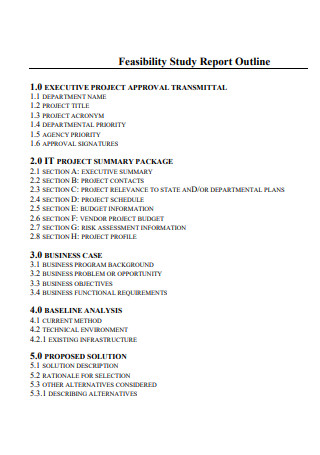
Feasibility Study Project Management Report Outline
download now -
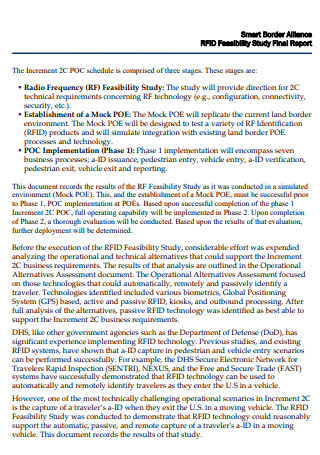
Feasibility Study Software Project Final Report
download now -
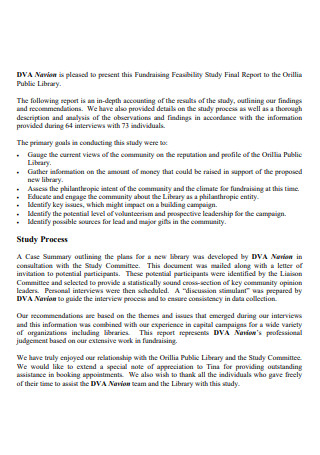
Fundraising Feasibility Study Design Final Report
download now -

Market Pre Feasibility Study Report
download now
FREE Feasibility Study Report s to Download
8+ Feasibility Study report
What Is a Feasibility Study Report?
Types of Feasibility Study
Benefits of a Feasibility Study Report
Steps on How to Make a Feasibility Study Report
FAQs
What Is the Purpose of a Feasibility Study?
Why Do We Need to Write a Feasibility Study Report?
When Does a Feasibility Study Take Place?
What Is a Feasibility Study Report?
A feasibility study report is a complete detailed examination of the viability of a proposed project. To determine the success of a venture, the study report contains variables such as technical, economic, legal, operational, and scheduling analysis. It will also help decide whether there will be enough revenue to cover the project’s costs. Making a feasibility statement includes studying financial fact sheets and projected expense worksheets for production and operational costs. That is why, regardless of the outcome of the feasibility analysis on the proposed project, contingency measures are always advised.
ASHA.org’s article on conducting feasibility studies includes a guideline and steps that can be followed. The steps in any form of feasibility study are, for the most part, the same. It has the same focus of determining the viability of success by analyzing relevant components. Pre-feasibility studies frequently assist project managers or small business owners with substantial investments, in determining the rate of success of a project. This also aids in identifying the aspects that will have a significant impact on the venture’s end-result. The end outcome is a return on investment via revenue from consumer sales. A feasibility study report is made up of various research reports of studies in various fields of business.
Types of Feasibility Study
A feasibility study’s goal is to uncover the weaknesses and strengths of a current or new business. And there are crucial aspects that could influence its completion. A conclusion can be reached by taking these aspects into account and summarizing them in the report. And they are all equally vital. Because any failure on one of them could influence the overall success of the venture. Here are five different types of feasibility studies:
Benefits of a Feasibility Study Report
You must have realized the significance of feasibility studies now that we have examined them all. When compared to a tall building, a feasibility study is like a risk assessment. The implications and repercussions of a discovered danger are highlighted in risk assessment reports. A feasibility study will also highlight the effects of each aspect that leads to success. More importantly, in huge businesses with large investments, there is a lot at stake, thus it cannot fail. The results include debt, widespread layoffs, and unhappy investors. The consequences affect not only the internal environment but also the external relationships. And if that isn’t enough to persuade you, consider the following benefits of a feasibility study reports below.
Steps on How to Make a Feasibility Study Report
A feasibility study report can be a time-consuming and difficult endeavor. There’s a lot of ground to cover. There is a lot of research that needs to be done. But it’s not all for naught. It provides insight and useful information. It also helps increase the likelihood of success. And that is critical for a new venture. It also aids in the creation of a defined roadmap for the development process. But first, let’s go over the steps for creating a feasibility study report.
Step 1: Preliminary Analysis
Conducting a preliminary assessment entail consulting with some stakeholders to get their feedback on the project proposal. This allows one to evaluate various business ideas or concepts for the project. The project proposal is also outlined in the preliminary analysis. It assesses the feasibility of attaining the project’s goals and objectives. This can be accomplished by focusing on the market’s needs. This analysis should also evaluate the product’s or service’s advantages and disadvantages.
Step 2: Market Analysis
Conducting market surveys and research is critical in determining the venture’s marketing scope of work. One can predict the market’s potential response by researching the existing market trend. Because consumer sales dictate revenue, determining where the market demand exists is critical. It aids in narrowing down the decision to pursue the business. This entails researching the competitors. It entails establishing reasonable market expectations about a product’s worth. In addition, consider how the target demographic might respond.
Step 3: Creating a Business Plan
The labor and beginning costs of production and operation are included in the business plan. It identifies the project’s organization. It establishes a deadline for completion. It helps create a structure to meet its technical, operational, economic, and legal feasibility factors.
Step 4: Projected Income Statement
The estimated revenue and profit are included in the projected income statement. The most significant consideration is the operational costs. It should not be overly broad or ambiguous. Since the funding for the project would be based on those considerations. This should also cover any alterations that may be required. This includes the cost of services and labor as well.
Step 5: Prepare Balance Sheets
The balance sheet should accurately reflect the company’s and the business’s assets and liabilities. To accomplish this, take note of products, suppliers, costs of leasing or acquiring any property, the costs of equipment and available funds.
Step 6: Analyze and Make a Go/No-go Decision
Analyzing and comparing existing facts with realistic expectations can aid in the development of a contingency plan. Comparing the income statement to the accessible balance sheets and expense spreadsheets, for example. It also aids in the creation of a more accurate report. After considering all of the relevant criteria, one may determine the likelihood of success. It would determine whether or not it is a go.
FAQs
What Is the Purpose of a Feasibility Study?
A feasibility study’s purpose is to help establish whether a certain strategy will generate the intended results. Whether or not the proposed project meets the requirements. The most crucial factor is how well it will perform in the market. If it has a reasonable chance of success in terms of revenue and profit.
Why Do We Need to Write a Feasibility Study Report?
A feasibility study assists a company or business owner in determining if a venture is worthwhile to invest in. It’s to avoid wasting money and resources on a failed venture. It also aids in the detection of problems and the discovery of new solutions. It’s very important to have a feasibility study before attempting to put a project into development.
When Does a Feasibility Study Take Place?
A feasibility report is often completed in conjunction with a project proposal and business plan. Since a proposal provides the concept and idea of a specific project, it offers a brief overview. And the feasibility study report is required before committing to the project’s development. A business plan is also created in the process of creating a feasibility report.
Each of us defines success differently. Unfortunately, “success” has a significant impact on business. To make sound decisions, accurate projections are required. And to get an accurate feasibility study report, just download feasibility study report templates and feasibility study report samples here at Sample.Net!
